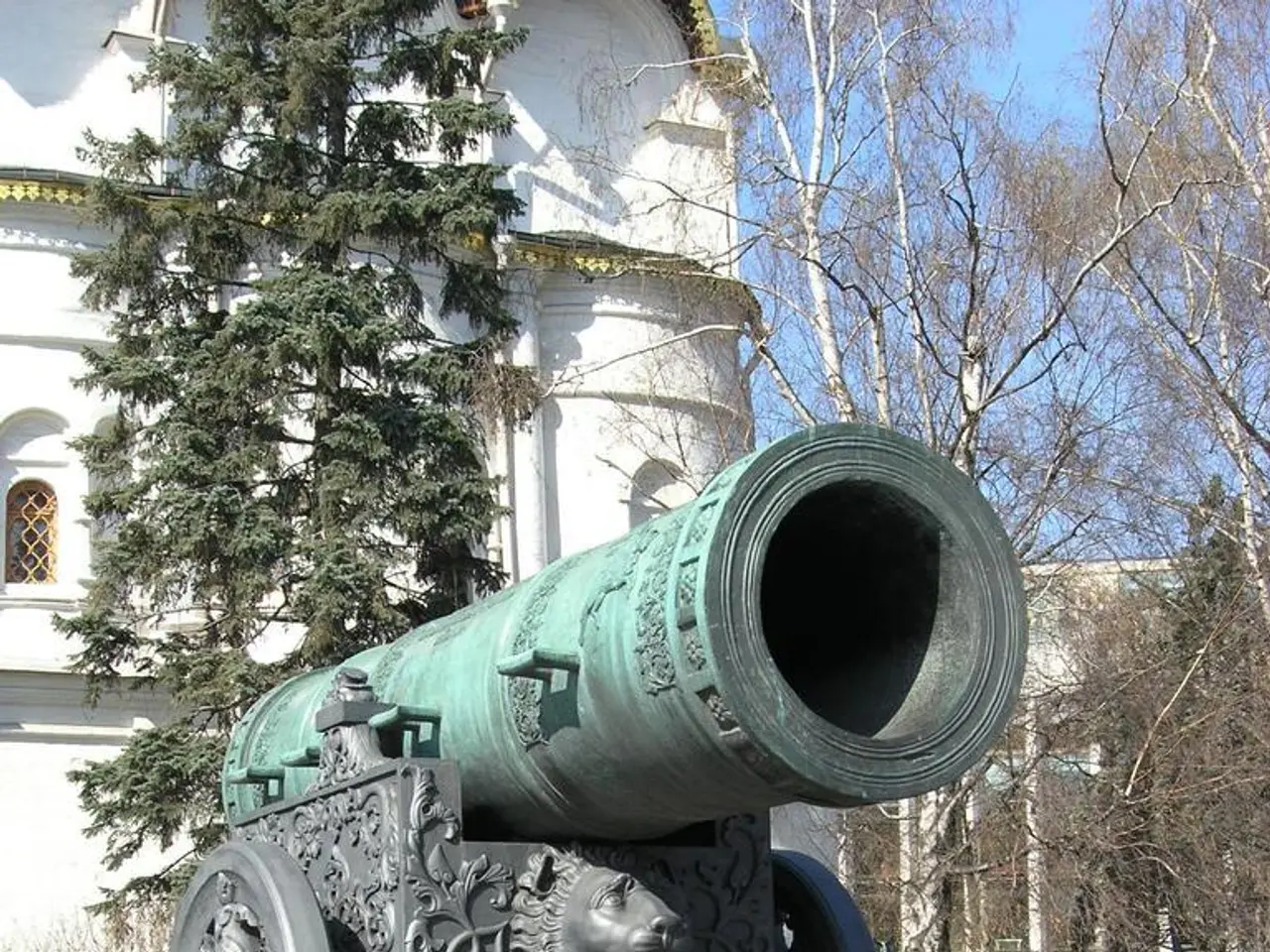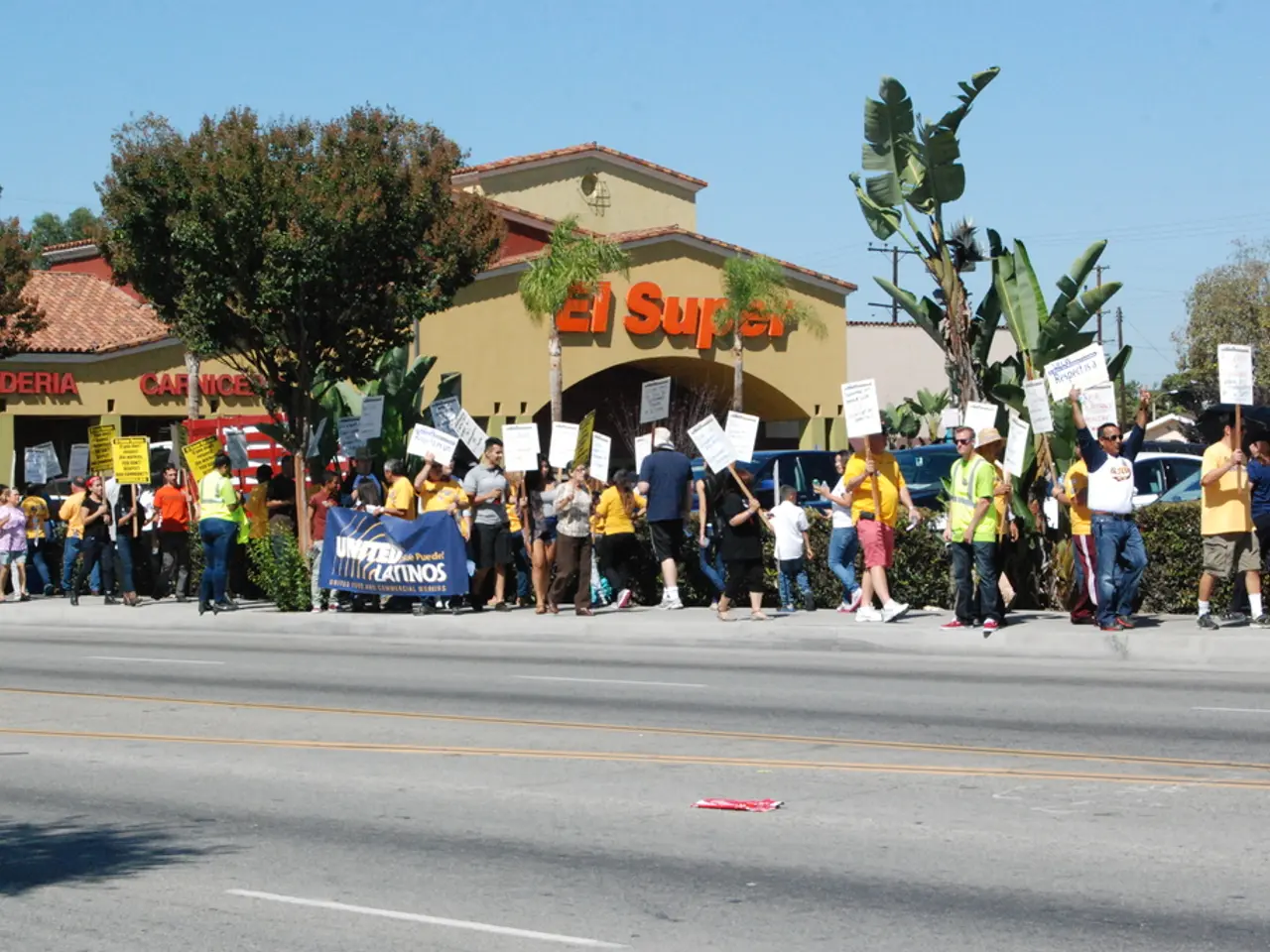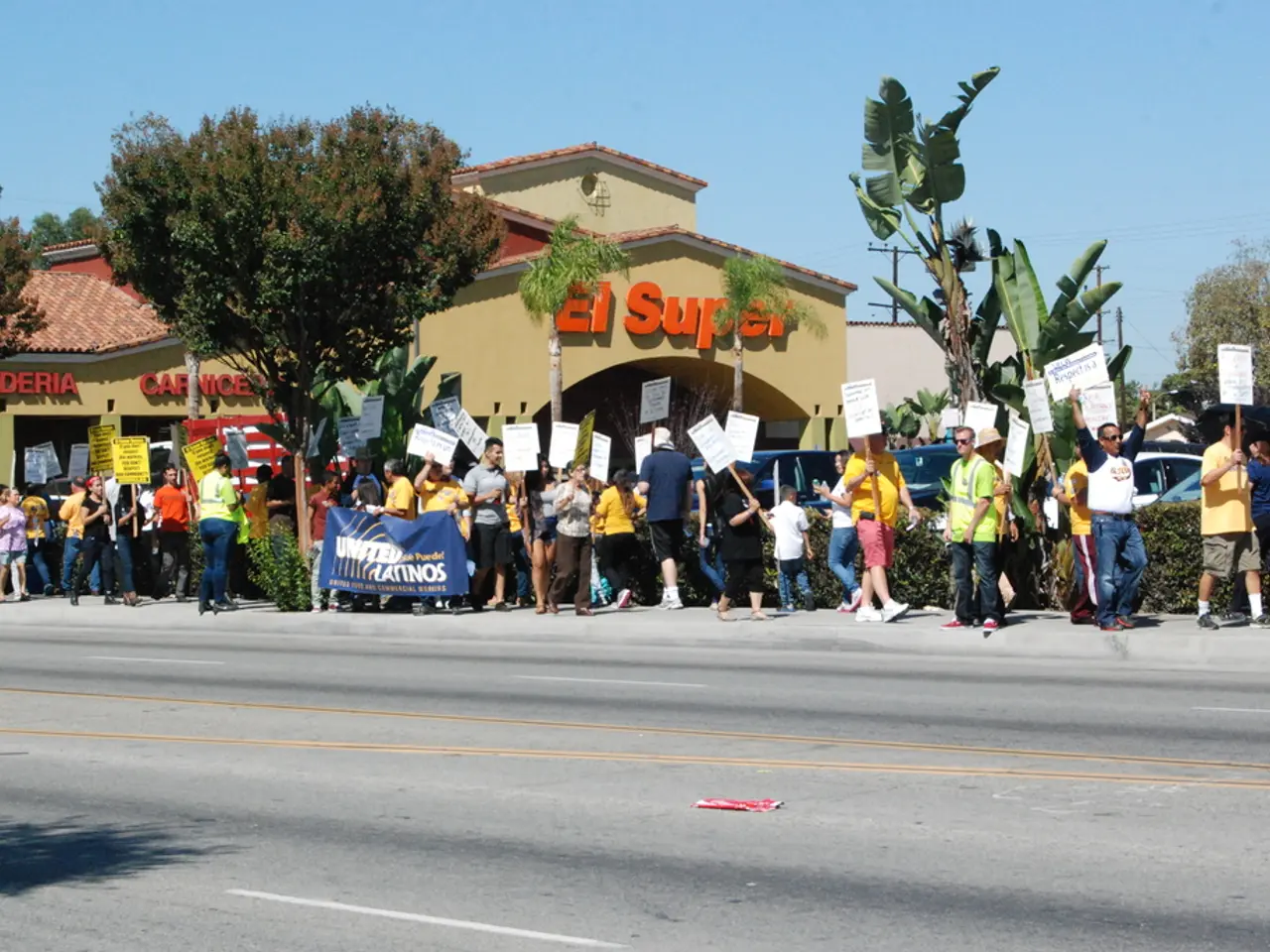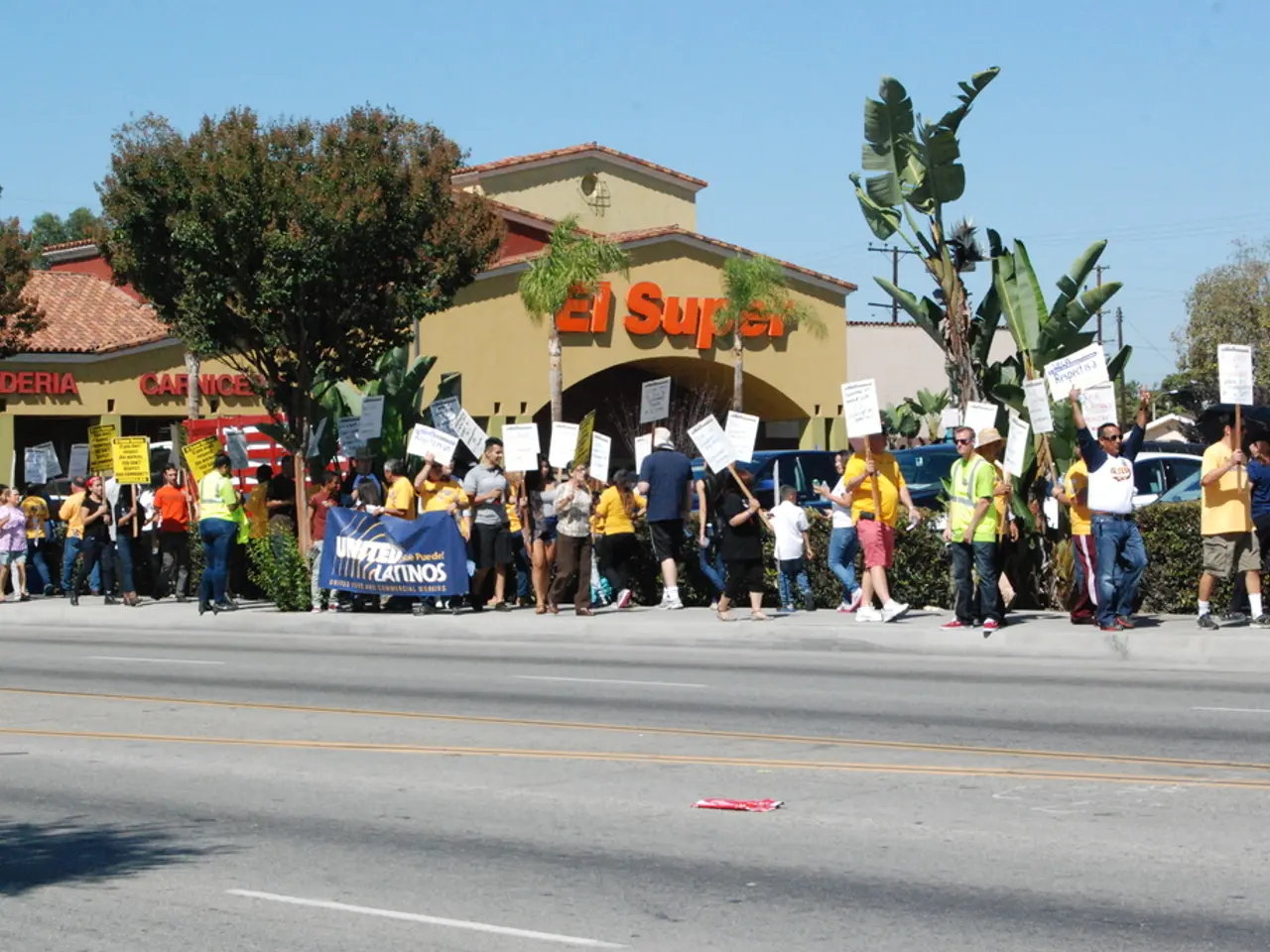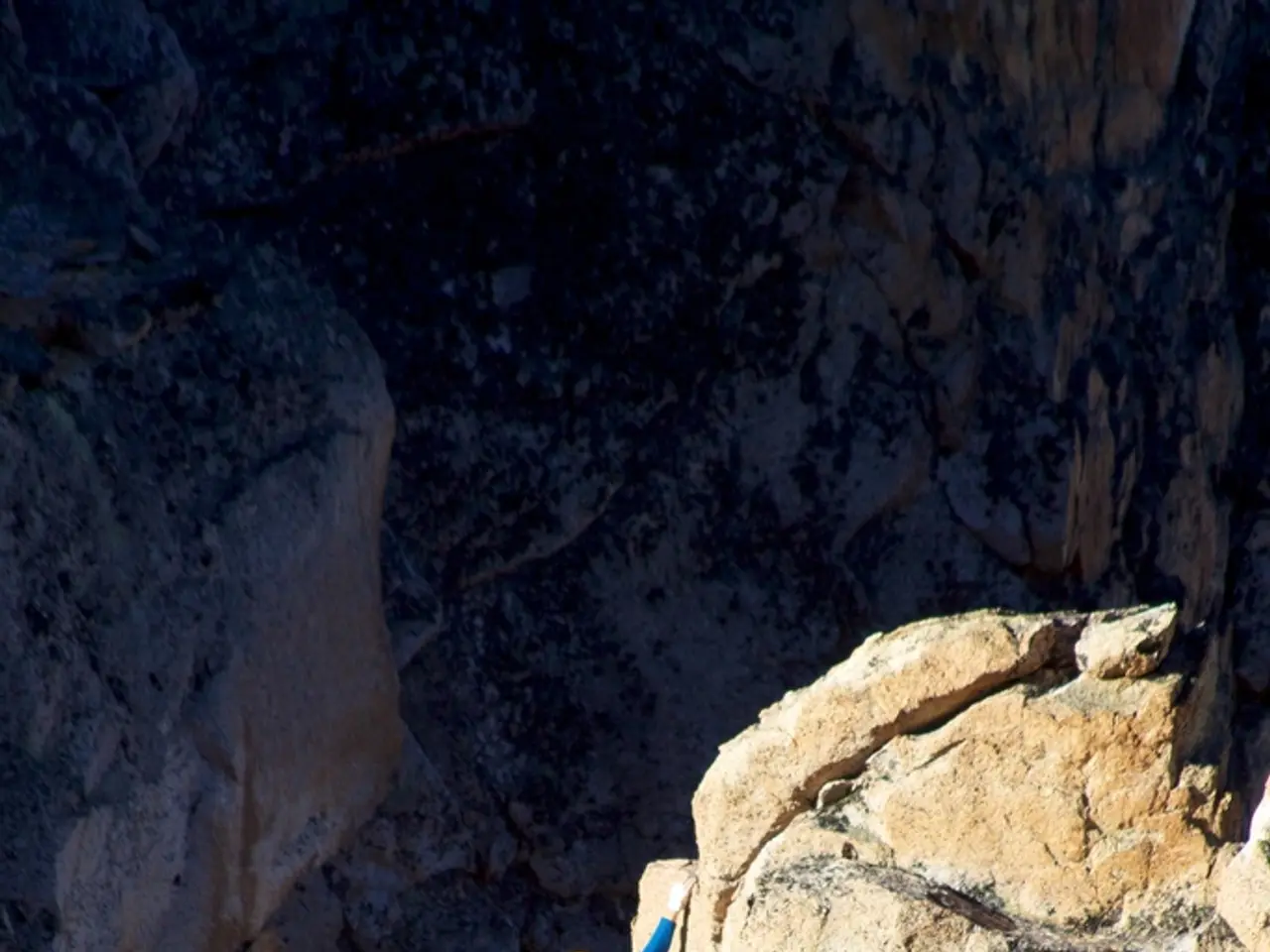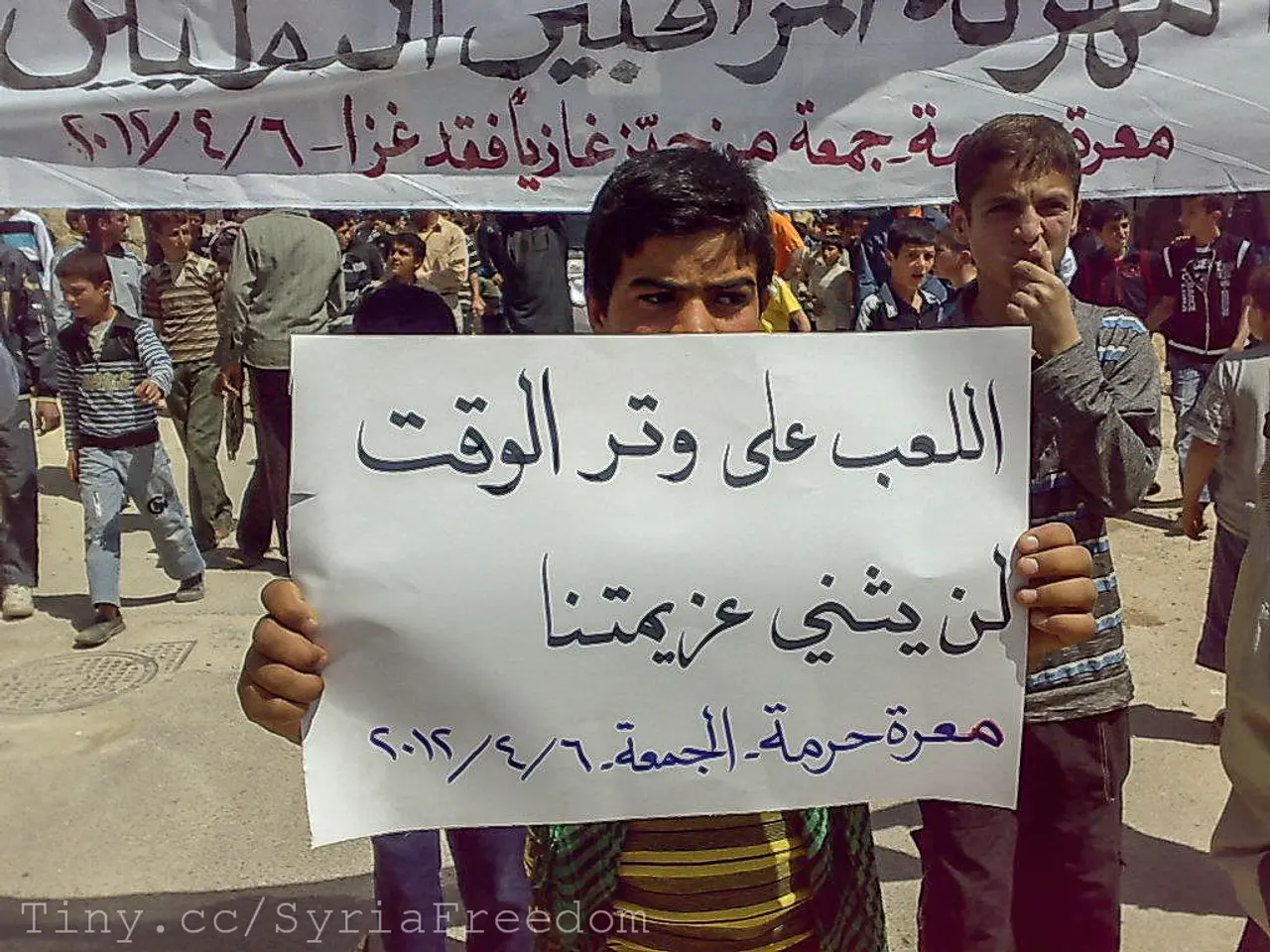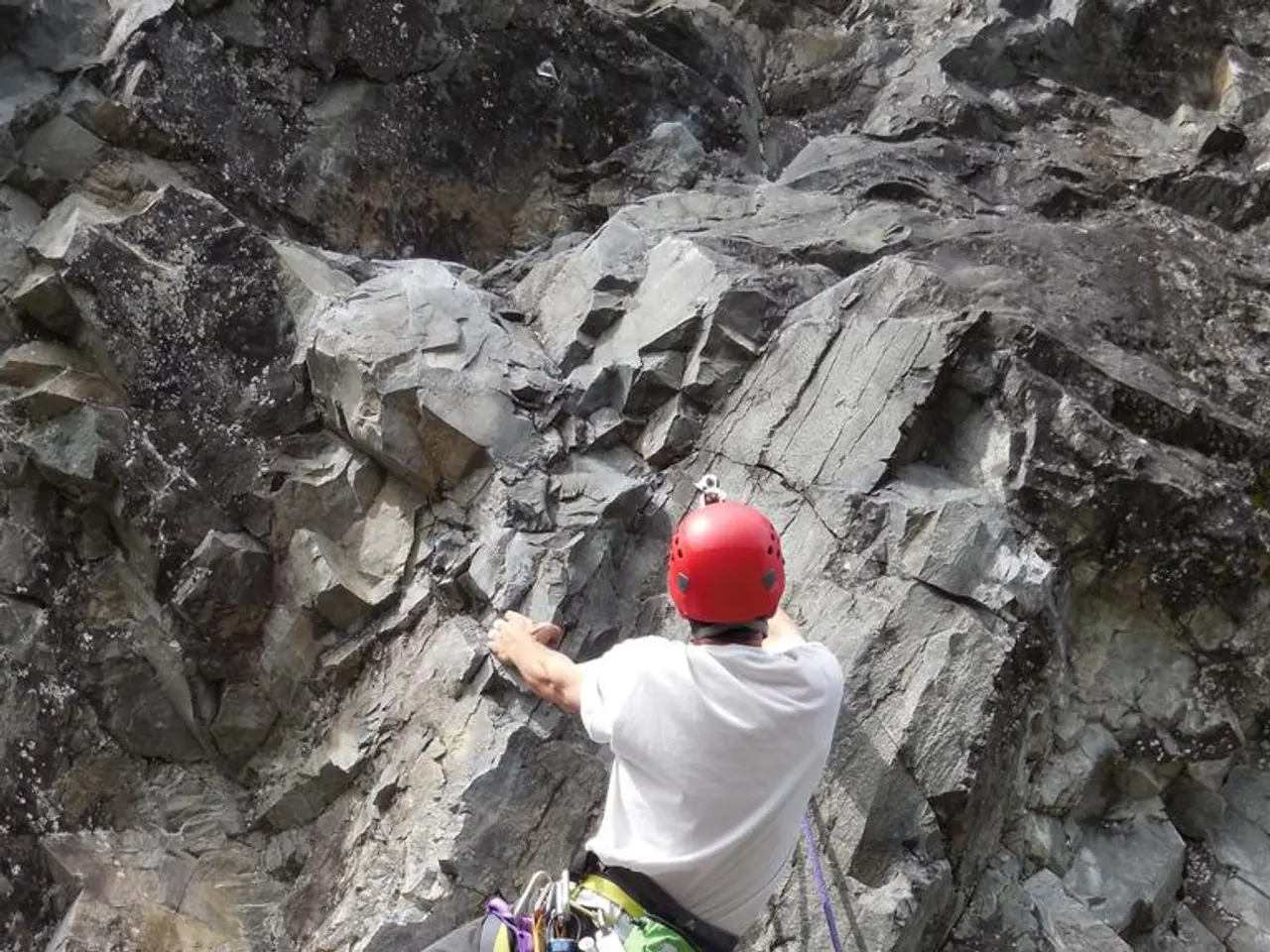"Russia continues its aggressive advance, relentless like the progression of a saw's teeth"
In the ongoing conflict in Ukraine, the Donbass region has seen a significant shift in the balance of power, with Russian forces making strategic advances that have encircled five key cities. According to Colonel Markus Reisner, the Russian success in Donbass can be attributed to a systematic, advancing envelopment of critical settlements, such as Pokrovsk and Selydove, aimed at encirclement [1].
In contrast, the northern sector of the frontline has seen a more static and less successful encirclement effort. The fighting around Kursk and nearby regions has involved defensive preparations like trench-digging by Russian troops and the destruction of bridges by Ukraine to hinder Russian movements [2].
The Russians are employing a tactic of attacking the enemy from multiple directions, aiming to bind and overload them, and cut off supply lines. However, attacking a wounded transport is a violation of international law [3].
The encircled cities in Donbass - Kupiansk, Sieversk, Kostyantynivka, Pokrovsk, and Novopavlivka - are currently holding, but the number of Ukrainian soldiers is decreasing. The precarious supply situation for the defenders can lead to slow sieges and, ultimately, the loss of these cities [4].
To mitigate logistical challenges, Ukraine has been increasingly using unmanned systems, Unmanned Ground Vehicles (UGV), or ground robots, for supply and injured transport. Rotations are carried out in small groups or squads, often just one or two soldiers at a time [5].
Space, such as rivers and terrain sections that differ in elevation, plays a crucial role in the conflict. Destroyed bridges over rivers near these cities can effectively disrupt logistics for the Ukrainian defenders [6].
The strategy of the Russian forces in Donbass is to wear down the opponent with 1000 small pinpricks along the battle line until they are exhausted, rather than a swift advance [7]. However, if the Russians manage to capture high ground in the flat eastern Ukraine, they can act much further from there, worsening the situation in the encircled cities [8].
Ukrainian drone unit commander Robert Brovdi emphasizes the need for Western military forces to adapt to battlefield developments. The most successful ground drones are produced in Ukraine, and they are used by both sides to monitor the battlefield, making large-group rotations risky [9].
As the conflict continues, the situation in Donbass remains tense, with the Russians gaining more ground north-east of Pokrovsk, creating an acute threat of encirclement for the defenders in the city [10]. The Ukrainian defenders in these cities are hoping for supplies, but the slow pace of deliveries due to the encirclement adds to their precarious situation.
- In light of the ongoing conflict in Ukraine, the current community policy should address the urgent need for effective logistical support for the defenders in the encircled cities, such as Kupiansk, Sieversk, Kostyantynivka, Pokrovsk, and Novopavlivka, to mitigate the ongoing threat of encirclement.
- As the political situation in Ukraine worsens due to the war-and-conflicts, general news outlets should prioritize reporting on the employment policies of both Ukraine and Russia, as their strategies in Donbass, particularly the use of unmanned systems, may significantly impact the balance of power.
